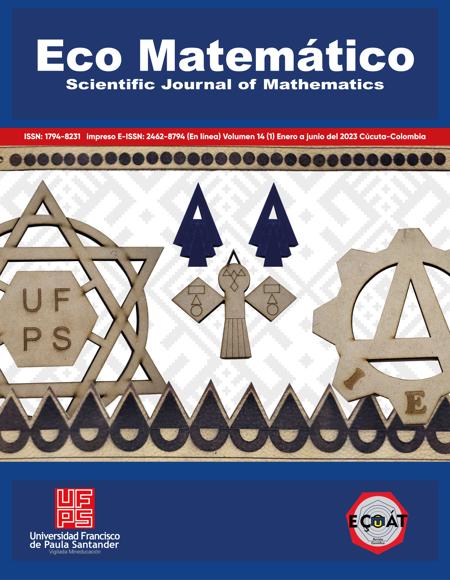Mathematical Symbols and Thermal Sums
Símbolos Matemáticos y Sumas Térmicas
Main Article Content
This paper presents a didactic proposal that gives the student the opportunity to make use of the summation symbol (Ʃ), a symbol used in Mathematics to denote generalized sums. Some didactic proposals are developed on mathematical problems applied to Agronomy related to climate aspects, which involve the use of the mentioned symbol. In the work, some didactic situations are presented so that the student has the opportunity to appropriate the summation symbol and at the same time can observe some practical applications in problems of an agronomic nature. With simple problems and direct application, the aim is for students to become familiar with the use of the summation symbol and with the notation corresponding to the variables where subscripts appear. On the other hand, it is noted that there is not always content at the beginning of the degree that allows the development and adaptation of abstract mathematical structures for understanding.
Downloads
Article Details
Agromática (s.f.). Integral Térmica, ¿qué tiene que ver con la agricultura? . https://www.agromatica.es/integral-termica/
Alvarez García M. (s.f.). Modelo de Integral Térmica. https://www.iriego.es/blog/noticias-2/post/modelo-de-integral-termica-208
Berger M. (2004). The functional use of a mathematical sign. Educational Studies in Mathematics, 55, 81-102.Booth L.R., Algebra: children's strategies and errors. Windsor: NFER-Nelson. DOI: https://doi.org/10.1023/B:EDUC.0000017672.49486.f2
Gastiazzoro Bletter J. (s.f.) Influencia del Clima sobre las Plantas. Elementos bioclimáticos para el crecimiento. Cátedra de Climatología y Fenología Agrícola. Facultad de Ciencias Agrarias. UNNE. https://exa.unne.edu.ar/biologia/fisiologia.vegetal/Influenciadelclimasobrelasplantas.pdf
IRiego, (s.f.). Integral térmica en el trigo y la soja. https://www.iriego.es/blog/noticias-2/post/integral-termica-en-el-trigo-y-la-soja-53
Parra Coronado A., Fischer G., Chaves Córdoba B. (2015). Tiempo térmico para estados fenológicos reproductivos de la feijoa (Acca sellowiana (O. Berg) Burret). Acta Biológica Colombiana. 20(1), 163-173. DOI: https://doi.org/10.15446/abc.v20n1.43390
Radford L. (1997). On Psychology, Historical Epistemology and the Teaching of Mathematics: Towards a Socio-Cultural History of Mathematics, Forthe Learning of Mathematics, 17 (1), 26-33
Radford L. (2000). Signs and meanings in students’ emergent algebraic thinking: a semiotic analysis. Educational Studies in Mathematics, 42. 237-268 DOI: https://doi.org/10.1023/A:1017530828058
Rawson M., Macpherson H. (2001). Trigo regado. Manejo de cultivo. FAO. https://www.fao.org/3/x8234s/x8234s0b.htm
Salazar-Gutierrez, J. Johnson, B. Chaves-Córdoba, G. (2013), Relación de la temperatura base con el desarrollo del trigo de invierno. Revista Internacional de Producción Vegetal, 7 (4), 741-762.
Sastre Vázquez, P. y D´Andrea, R.E. (2011). Análisis del lenguaje matemático en estudiantes ingresantes a Carreras de Ingeniería. Anales del XVI EMCI Nacional y VIII Internacional. http://emci.edu.ar/anales-de-encuentros/#2011
Sastre Vázquez, P., Boubee C., Rey G., Delorenzi O. (2008). La comprensión: proceso lingüístico y matemático. Revista Iberoamericana de Educación, 46 (8), 1-9 DOI: https://doi.org/10.35362/rie4681893
Sastre-Vazquez,P. , D’Andrea R., Villacampa, Y. Navarro-Gonzalez,F.J. (2013). Do first-year University students understand the language of Mathematics? Procedia Social and Behavioral Sciences, 93, 1658-1662. DOI: https://doi.org/10.1016/j.sbspro.2013.10.097







